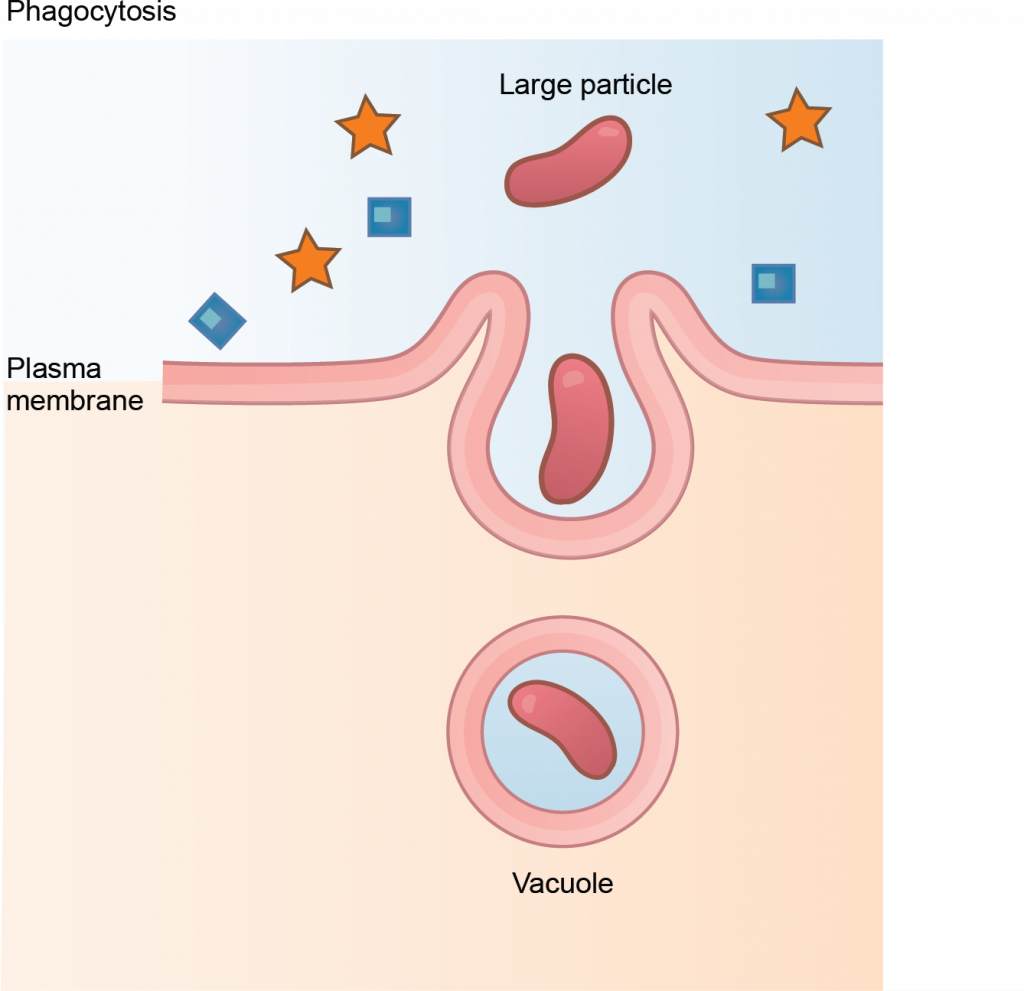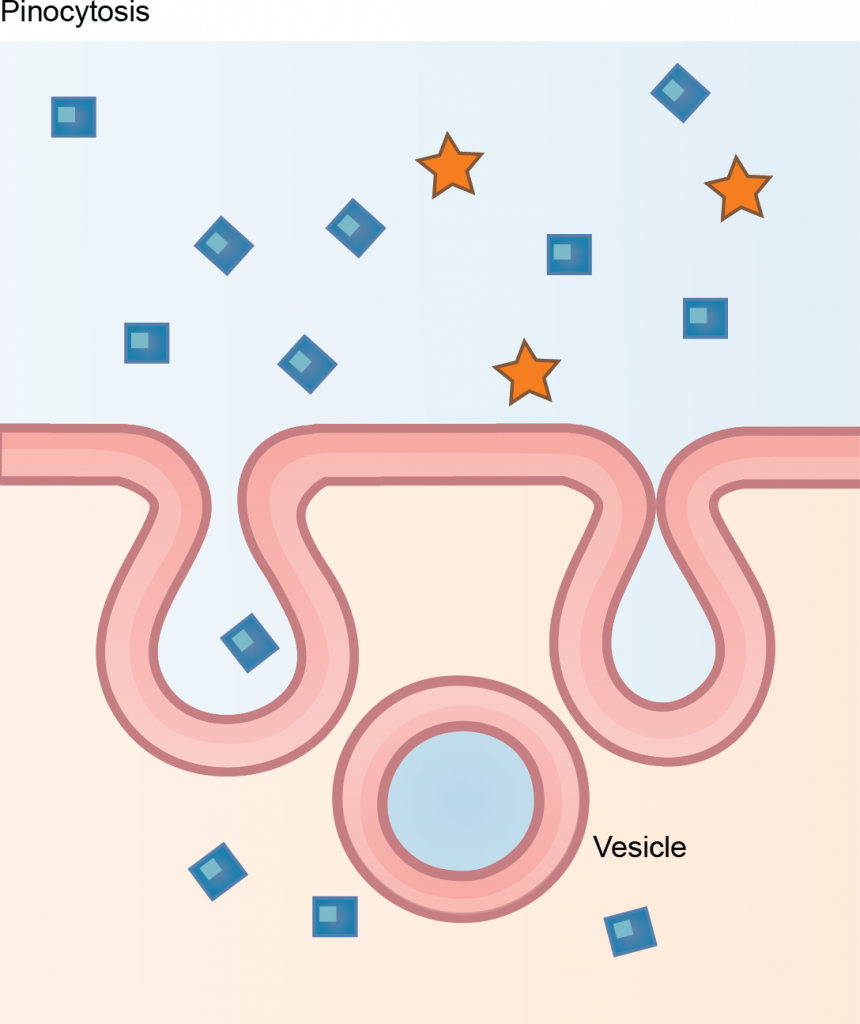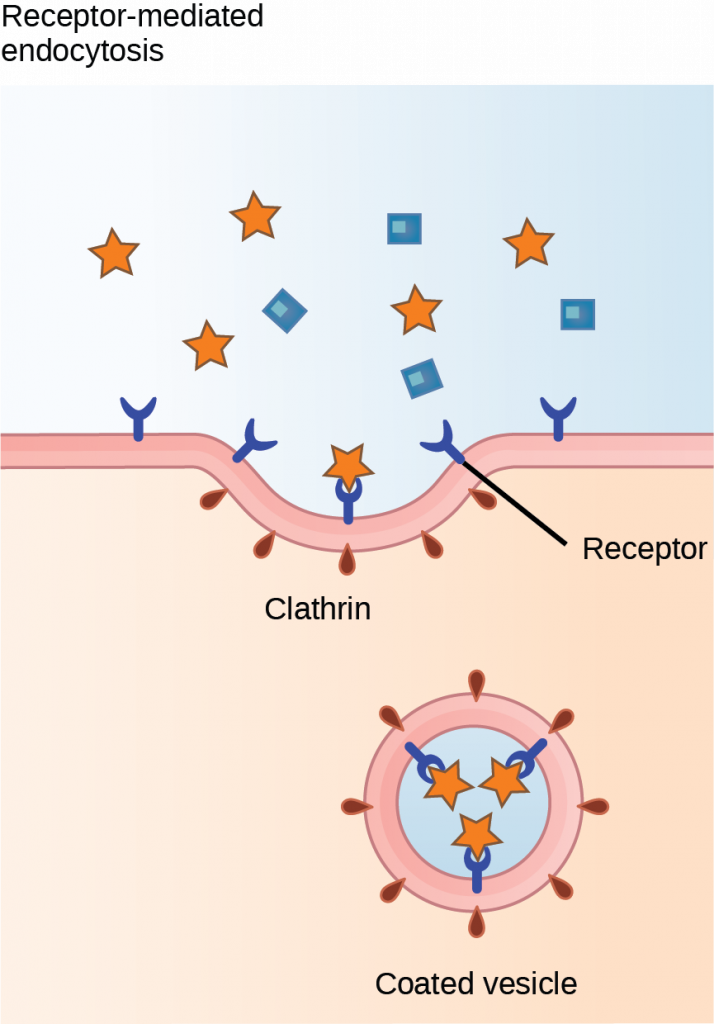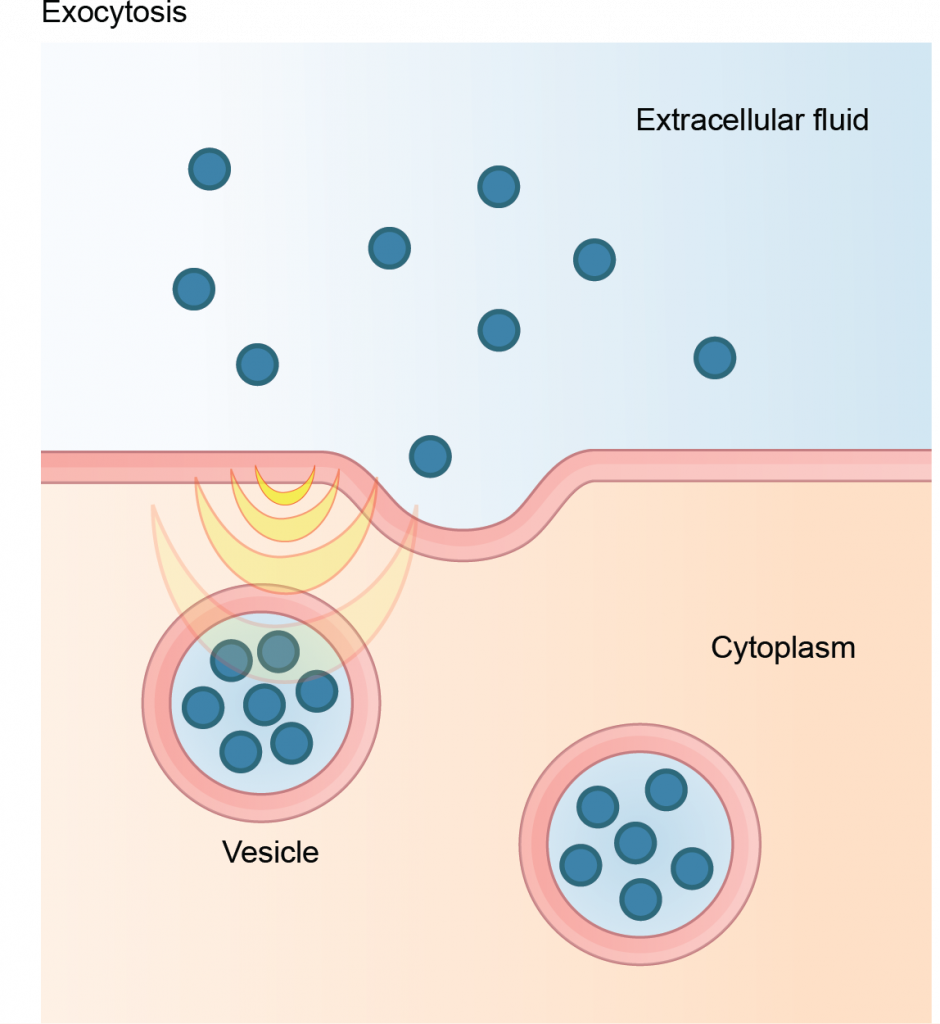10.4 Bulk Transport
In addition to moving small ions and molecules through the membrane, cells also need to remove and take in larger molecules and particles. Some cells are even capable of engulfing entire unicellular microorganisms. This requires energy. A large particle, however, cannot pass through the membrane, even with energy that the cell supplies. Large particles, or large quantities of small particles, can be moved across the membrane using bulk transport, which requires energy and a involves a membrane-bound vesicle.
Endocytosis
Endocytosis is a type of active transport that moves particles, such as large molecules, parts of cells, and even whole cells, into a cell. There are different variations of endocytosis, but all share a common characteristic: the cell’s plasma membrane invaginates, forming a pocket around the target particle. The pocket pinches off, resulting in the particle containing itself in a newly created intracellular vesicle formed from the plasma membrane.
Phagocytosis
Phagocytosis (the condition of “cell eating”) is the process by which a cell takes in large particles, such as other cells or relatively large particles. For example, when microorganisms invade the human body, a type of white blood cell, a neutrophil, will remove the invaders through this process, surrounding and engulfing the microorganism, which the neutrophil then destroys. Once the vesicle containing the particle is enclosed within the cell, the vesicle merges with a lysosome for breaking down the material in the newly formed compartment.

Pinocytosis
Another variation of endocytosis is pinocytosis. This literally means “cell drinking”. Discovered by Warren Lewis in 1929, this American embryologist and cell biologist described a process whereby he assumed that the cell was purposefully taking in extracellular fluid. In reality, this is a process that takes in molecules, including water, which the cell needs from the extracellular fluid.

Receptor-mediated Endocytosis
A targeted variation of endocytosis employs receptor proteins in the plasma membrane that have a specific binding affinity for certain substances.
The failure of receptor-mediated endocytosis causes some human diseases. For example, receptor mediated endocytosis removes low density lipoprotein (LDL) from the blood. In the human genetic disease familial hypercholesterolemia, the LDL receptors are defective or missing entirely. People with this condition have life-threatening levels of cholesterol in their blood, because their cells cannot clear LDL particles.
Although receptor-mediated endocytosis is designed to bring specific substances that are normally in the extracellular fluid into the cell, other substances may gain entry into the cell at the same site. Flu viruses, diphtheria, and cholera toxin all have sites that cross-react with normal receptor-binding sites and gain entry into cells.

Exocytosis
The process of moving material out of a cell is the process of exocytosis. Exocytosis is the opposite of the processes we discussed above in that its purpose is to expel material from the cell into the extracellular fluid. Waste material is enveloped in a membrane and fuses with the plasma membrane’s interior. This fusion allows expulsion of the waste material into the extracellular space. Other examples of cells releasing molecules via exocytosis include extracellular matrix protein secretion and neurotransmitter secretion into the synaptic cleft by synaptic vesicles.

a means of moving large particles or large quantities of small particles across a membrane by means of a vesicle; requires energy
a membrane-bound structure within a cell in which substances are transported or stored
type of active transport that moves substances, including fluids and particles, into a cell
organelle in an animal cell that functions as the cell’s digestive component; it breaks down proteins, polysaccharides, lipids, nucleic acids, and even worn-out organelles
process of passing bulk material out of a cell

